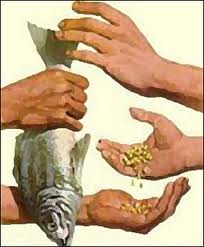Dog of War
Besides
ruling the largest land empire the world has ever seen, Genghis Khan apparently
is also the ancestor of 0.5 percent of the world’s male population. That’s
around 16 million living, breathing great, great, great (and so on) grandkids of
the Scourge of God himself.
While
the Phoenician Empire was built through commerce, Genghis Khan’s empire was
built through warfare, with the result that he killed off a good portion of Asia’s
population during his bloody conquests.
To
be fair though, he also helped repopulate the world.
How’d
he manage it, though--how did he build an empire that, at its apex, occupied
16% of the world’s total land area?
For
one thing, he had an efficient, disciplined, well-organized army. For
another, he had history’s greatest generals leading that army. One of them was Subutai,
widely considered as the military mastermind behind the Mongol Empire.
One
of Genghis Khan’s legendary “Dogs of War” (there were four) Subutai is arguably
the greatest general that ever lived.
Born
in 1176, this particular “Dog of War” was the son of a blacksmith who signed
him up to the Great Khan’s army when he was seventeen years old. Within ten
years he became a general of that army, despite being born a commoner. (Also despite having a name that conjures up an
extremely distasteful image—to Filipino speakers, that is. In Filipino, subu/subo means to put into one’s mouth; and tai/tae means excrement. Yes, he’s
General Shit Eater—which sounds badass, if you think about it.)
 |
| Yep, that's him--Subutai |
General
Subutai was one of the first generals
to realize the value of siege engines, not only for use in siege warfare, but
also as artillery. In the Battle of Mohi (1241), when Hungarian crossbowmen was
inflicting heavy casualties to the Mongol forces as they were attempting to
cross a bridge, the general ordered his engineers to build great stone
throwers, which until then were used only to smash the walls of enemy fortresses,
and used them to hurl huge rocks at the enemy, thereby clearing the way for his
army.
He
also ordered another bridge to be built secretly further downriver. His troops
used that bridge to flank the rest of the Hungarian forces, who had gathered to
meet the crossing of the main Mongol force on the first bridge.
The
Hungarians soon found themselves surrounded.
One
of Subutai’s tactics was to let a surrounded enemy think it still has an
escape, a tactic described in Sun Tzu’s Art of War. (“When you surround an army, leave an outlet free. This does not mean
that the enemy is allowed to escape. The object is to make him believe that
there is a road to safety, and thus prevent his fighting with the courage of
despair.” Sun Tzu, The Art
of War, Ch. VII.)
As
the Hungarians were retreating towards what they thought was an escape route,
the general sent his light cavalry and mounted archers to easily pick off one
by one the fleeing Hungarians. With devastating effect.
As
a consequence of this battle, about half of Hungary was destroyed, and 25% of
the populations were killed.
Subutai
was not done, however. Within a day of the victory over the Hungarians, another
one of his army division dealt a crushing defeat to the combined armies of Poles,
Czechs, and Germans at the Battle of Legnica.
This
meant that Subutai orchestrated the destruction of the numerically superior armies
of two nations in two separate battles located hundreds of miles apart that led to the slaughter of 65,000 enemy soldiers, while losing around four thousand of his own men.
On two consecutive days.
One
of the leaders whom Genghis Khan appointed to lead the invasion of Persia, General
Subutai also commanded the Mongol vanguard during the campaign against the Khwarezmian Empire. After which he masterminded the conquest that ultimately conquered Russia.
After
the death of Genghis Khan in 1227, Ogedei Khan, the successor, sent Subutai to lead
the Mongol invasion of Europe, an invasion that almost succeeded. It failed not because the Mongols were defeated,
but because the death of Ogedei Khan forced the Mongol Princes to return to
Mongolia to elect a new Khan.
 |
| Ogedei Khan |
Unlike
other generals who were at the head of their armies when riding off to war, Subutai
valued strategic planning more than personal valor. He often placed his command
post on a high ground so that he could observe the battle from afar, making tactical
adjustments and directing his troops using flags.
It
evidently worked; by the time he was done, Subutai won sixty-five major battles
and conquered thirty-two nations along the way.
He is also credited as the only military commander to conquer Russia.
He
was extremely effective at coordinating simultaneous attacks over great
distances (remember that this was in a time before electronic communications). The
great general was also famous for his masterful use of siege engines, his surprise
attacks, his effective use of feints and ambushes, his strategies tailored to
match the enemy, and his use of a vast network of spies.
Subutai’s
final conquest was against Song China (1246-1247). He was never again sent to conquer faraway
lands, as no Khan would dare let him out of sight for fear of losing the protection
of the empire’s most fearsome general.
He
died at age 72.




Genghis Khan was hardcore. I was just reading about him the other day. He was one ruthless dude.
ReplyDeleteNice write up.
Loved reeading this thank you
ReplyDeleteIt's fascinating to learn how military strategy evolved with figures like Genghis Khan.
ReplyDelete